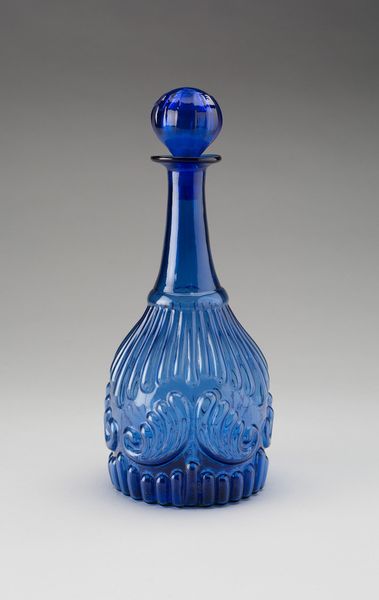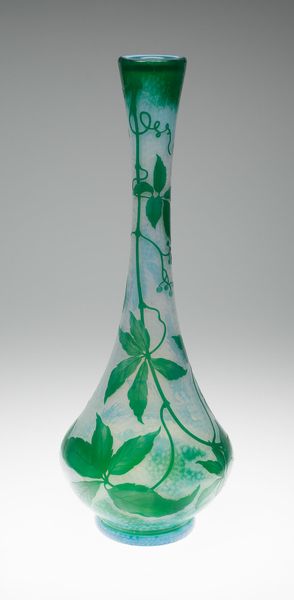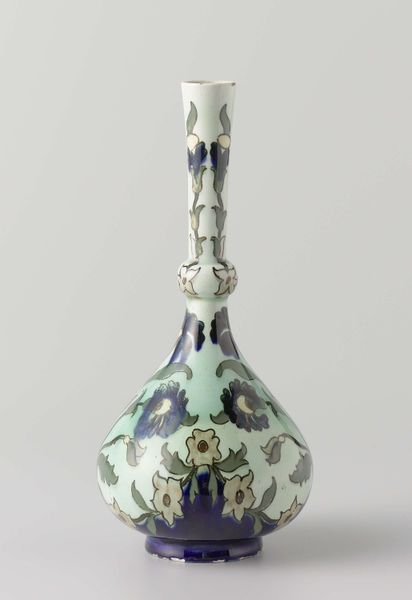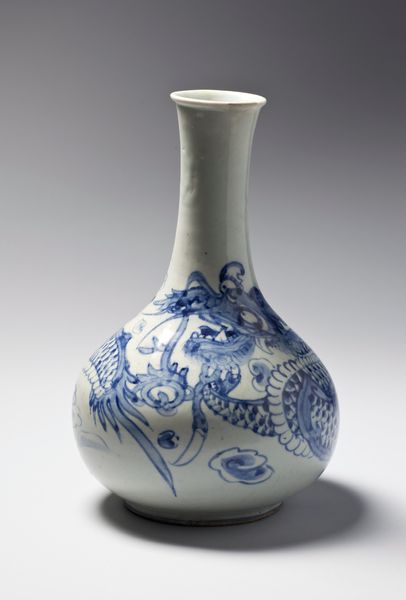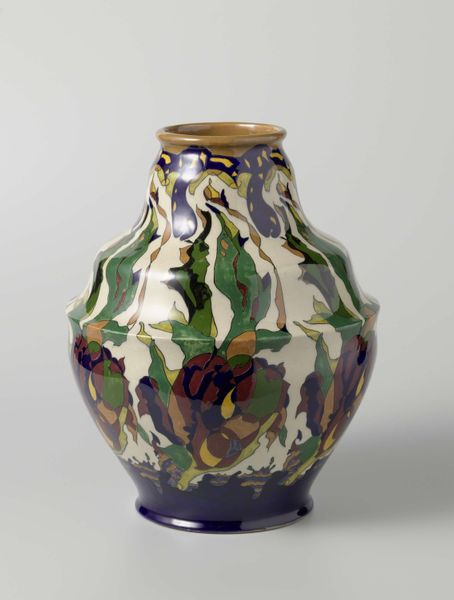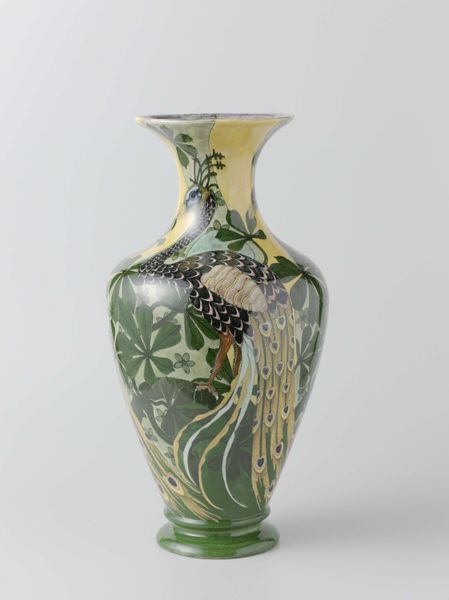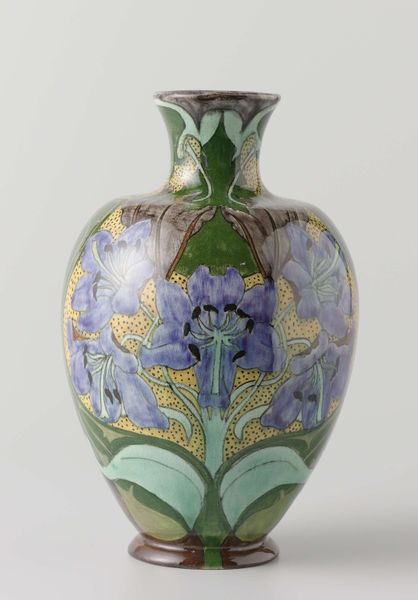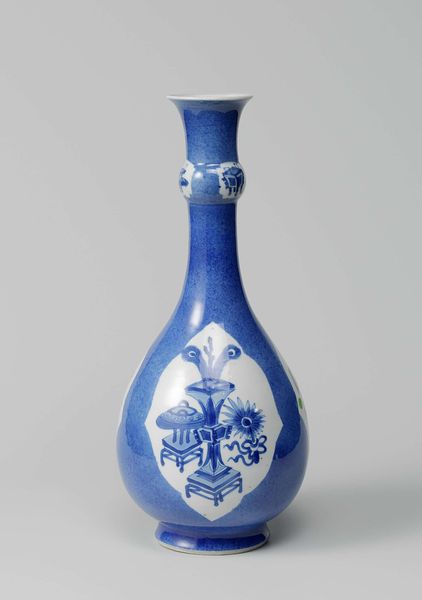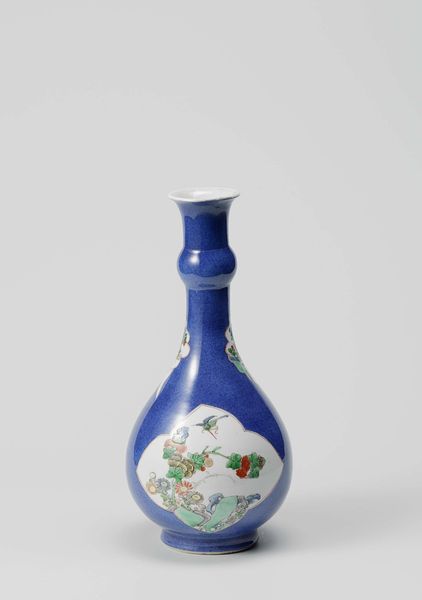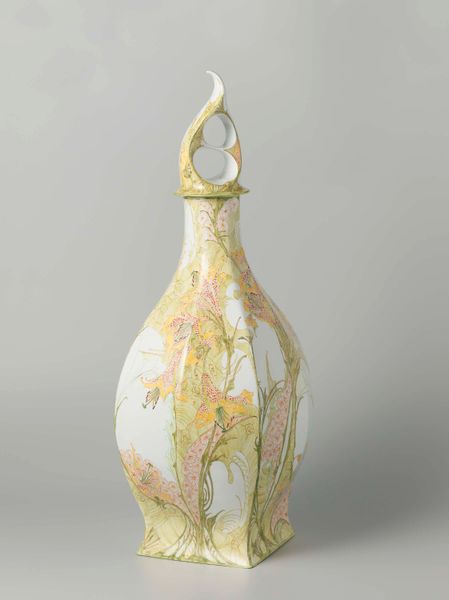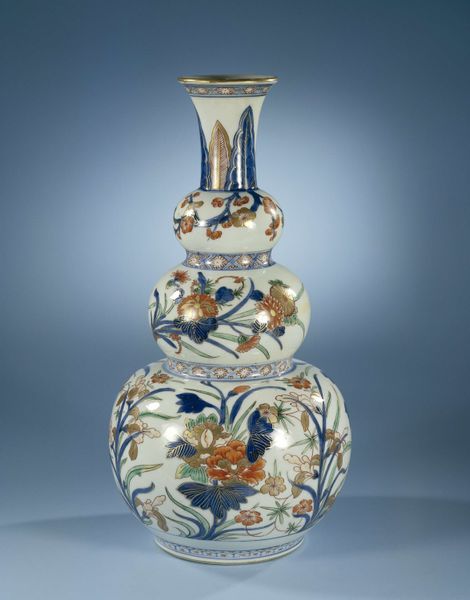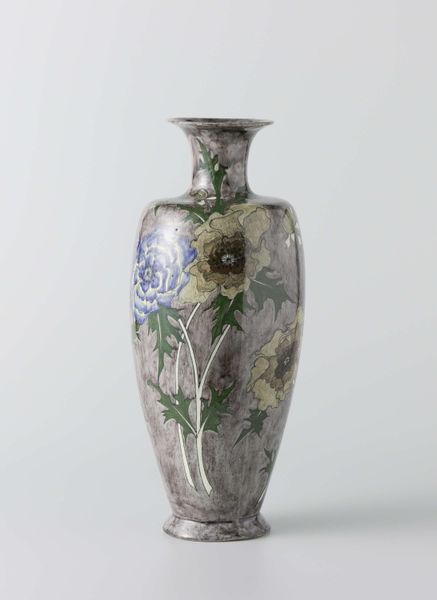
ceramic, porcelain
#
ceramic
#
porcelain
#
ceramic
Dimensions: 9 x 4in. (22.9 x 10.2cm)
Copyright: Public Domain
This vase was crafted by Carl Frederick Liisberg, though its precise date remains elusive. The deep blue glaze, flowing like water, immediately evokes the depths of the sea and the vastness of the sky. Blue, a color of both serenity and power, resonates deeply within our collective consciousness, carrying with it the weight of centuries. The vase's teardrop form is reminiscent of ancient amphorae and vessels, objects intended to both contain and communicate. Think of the Egyptian canopic jars preserving the organs of the deceased, each symbolizing renewal. The vessel as a symbol of containment evolved from holding sustenance to embodying spiritual capacity. Blue pigments historically were derived from lapis lazuli. This precious stone often symbolized royalty and divinity, so the vase transcends its functional role to become a totem. This striking color and shape engage us on a subconscious level. We are drawn to its calming yet profound presence. Thus, in Liisberg's vase, we see not just a container, but a modern echo of primordial forms and meanings. It is part of an endless cycle where symbols are reborn, proving that what is past is never truly gone.
Comments
minneapolisinstituteofart almost 2 years ago
⋮
Royal Copenhagen, one of the foremost porcelain manufactories in Denmark, played a significant role in the continued development of technical and artistic advances throughout Europe at the turn of the century. It was established and administered under royal auspices until 1883. At that time, Arnold Krog, architect and ceramicist, became art director and introduced his innovative glazing and decorative techniques, revolutionizing the firm's artistic output. The firm's employees were aware of the European art scene and interested in the increasing appreciation of Asian, or "Oriental," art. They included Carl Frederick Liisberg, who served both as sculptor and underglaze painter for Royal Copenhagen from 1885 to 1909. This vase, with its modest form, is exceptional for the unique painterly glaze in vibrant shades of blue with visible paint drips and variations in hue and texture. The visual effect of these original techniques seems to anticipate Abstract Expressionism in painting, yet predates it by nearly fifty years.
Join the conversation
Join millions of artists and users on Artera today and experience the ultimate creative platform.
